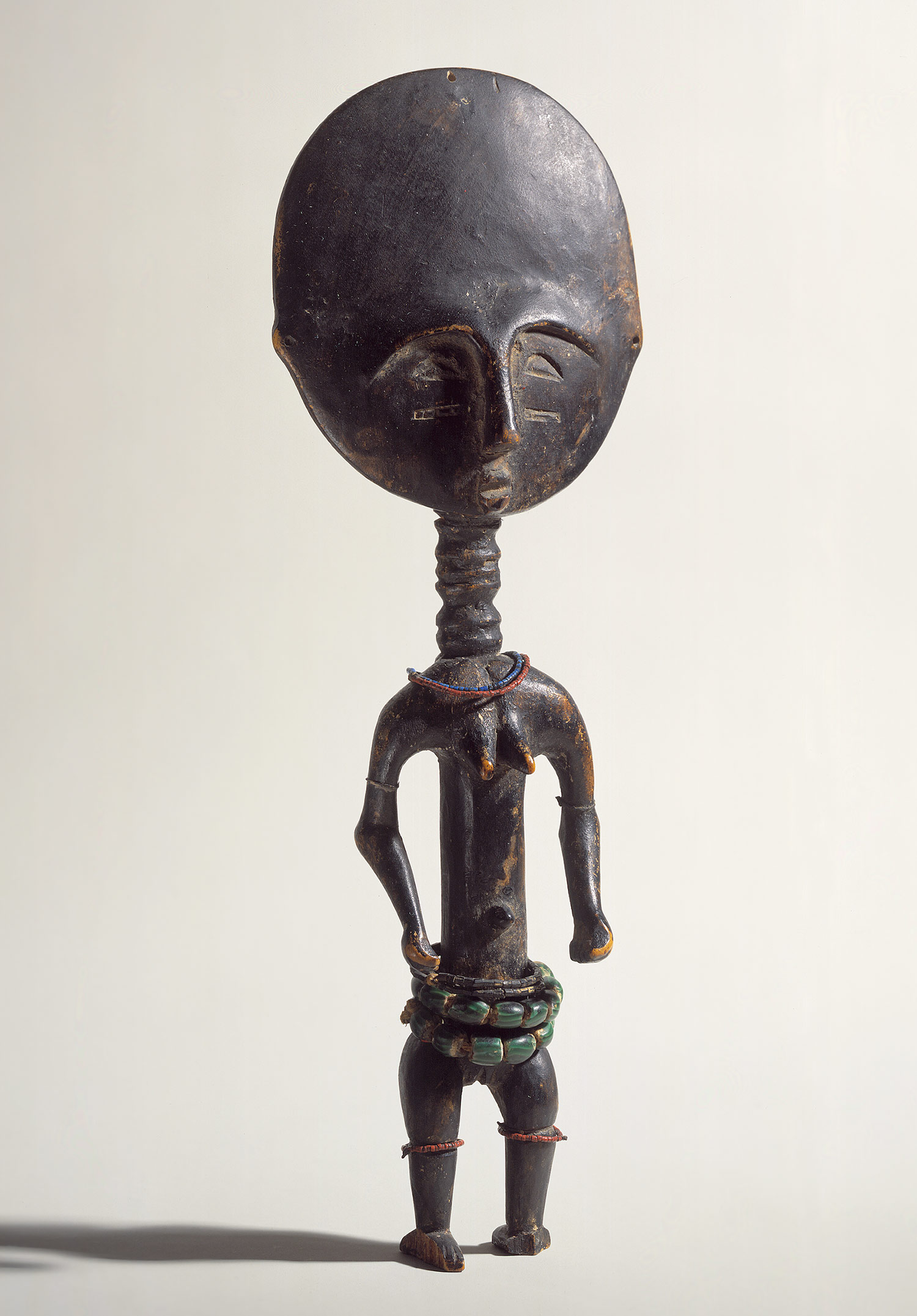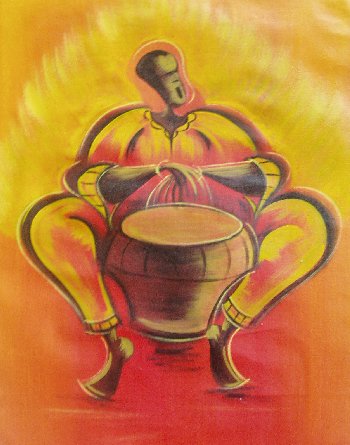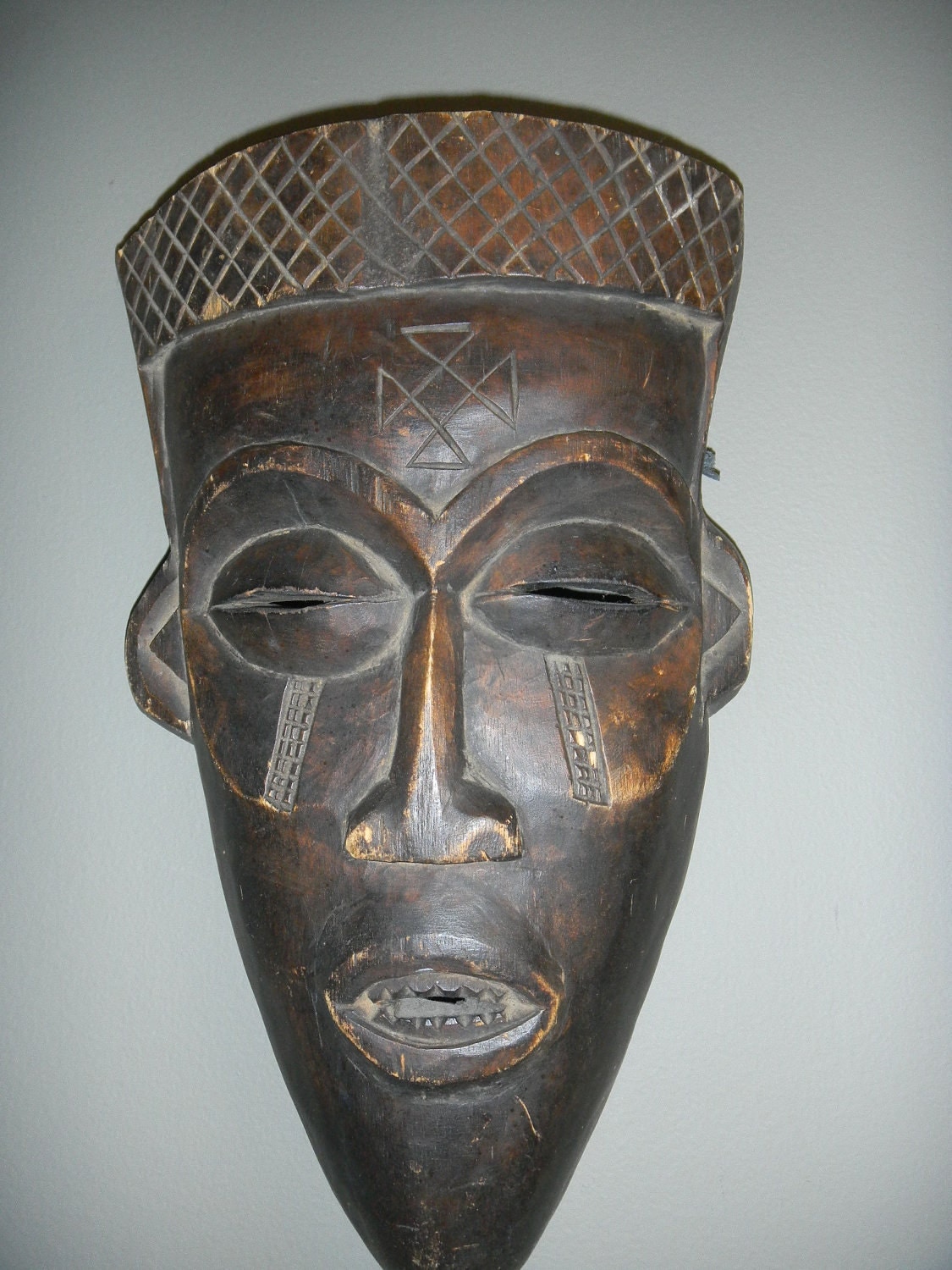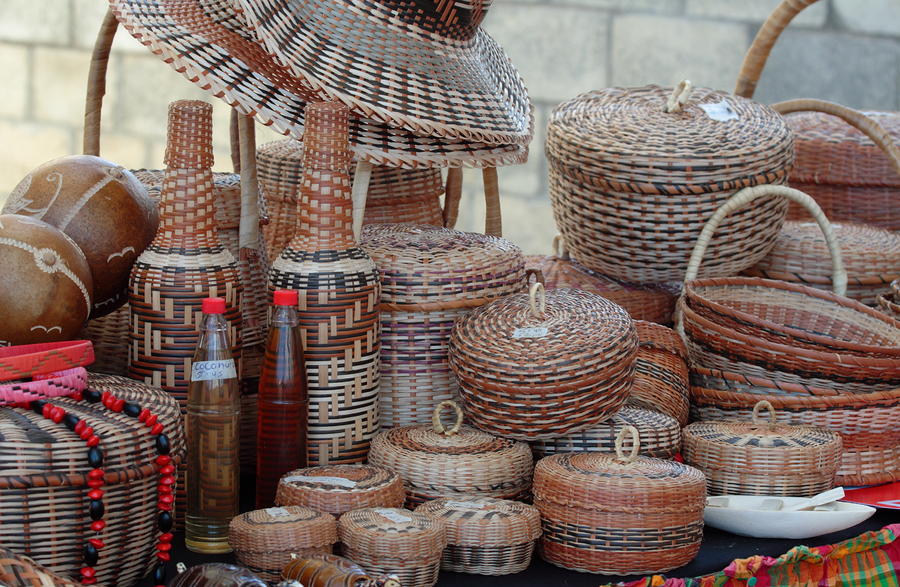Carving is one of the dominant art forms in Ghana. Ghanaian carving uses materials that
are natural to their environment, including wood, bone, ivory, metal, and
marble, and now you’ll find modern materials such as plaster of Paris and PVC
are used. Traditionally, this kind of carving was a reflection of the
community’s views, ideas, and ideals. There was very little opportunity for an
artist’s own expression; the idea of group was larger than the individual. This
style of art generally fell into two categories: practical household items and figurines.
Household items included many utensils used in cooking and
preparing medicines, such as bowls, spatulas, spoons, ladles, combs, chairs,
beds, cupboards, stools, mortar & pestles, walking sticks, and linguist
staves, as well as games. Tools were also important items that carvers
created. Some of these included
knife handles, swords, daggers, canoes, handles for hoes and other tools used
in planting and harvesting, boxes, and other items.
Trees that were cut down for carving purposes underwent an
extensive purification ceremony to rid them of evil spirits and such. One of the first things a young carver
will create is a set of their own carving tools. After the set is complete, there will be a special blessing
ceremony where a high-proof alcohol is poured on them and prayed over to ensure
no injuries to the carver. This is primarily done out of a lack of
understanding of tetanus, staff infections, and other diseases.

Dolls and figurines were also an important part of the
carver’s repertoire. Many of these dolls were figures and masks that were used in shrines
and part of a chief’s revered cult items. Both male and female figures were
used, many for fertility reasons. Many were also used to indicate social status
and tribe as well. Carvers often worked in secret for the number of taboos that
surrounded the art. One taboo is that a pregnant woman cannot see an unfinished
piece for fear that the unfinished figurine will imprint it’s image into the
unborn child. I think it’s
probably just an elaborate plan to get people to leave them alone enough to
work.

Stools are also important. Ghanaians believed these stools
embodied the “mythical soul of the ethnic lands.” Primarily used by the chiefs, they were highly decorated
with emblems and figurative designs that mark each tribal history and are used
as identifying marks for each ethnic group. In fact, the uprising that was
instrumental to Ghana’s independence was called the War of the Golden Stool,
stemmed from an incident that the British governor in Ghana demanded that the
Ashanti hand over the golden stool, a symbol of divine Ashanti sovereignty. (I
still think this is one of the stranger-sounding war names.)
Ghana also has a lot of textile arts, including weaving mats and other household items. They are quite known for their kente cloth with woven symbolism. Each color has a different meaning, and this is a special cloth. It's only worn at special occasions.

In modern times, Ghanaian artists study at universities in
both Ghana and abroad. They excel
in a variety of mediums, including painting, sculpting, and vocational arts.
While each artist is different and has their own style, each is also careful
not to shun their own traditional arts.
Most artists incorporate the old styles and what is “Ghanaian” into
their paintings and works. Artists who favor painting often portray people in
groups and crowds (perhaps going back to this idea of group mentality?), but
even the paintings that portray an individual shows them in either traditional
dress or capturing a moment in an average day for a Ghanaian. But if there’s
anything to say about Ghanaian art is that Ghana is a diverse country: there
are 79 languages spoken here, many religions, and mixed races. Because art is
often seen as an extension of who we are, it makes it hard to narrow down
concrete attributes because its diversity.

Like many areas in Africa, storytelling was the primary form
of literature. Most of these
stories were historical accounts or fables that were passed down by word of
mouth from generation to generation.
One of the most common fables, the story of Anansi, is thought to have
its origins with the Ashanti people of Ghana. Variations of Anansi’s stories spread throughout West Africa
and the Caribbean. These stories started to be written down to give out as
children’s readers.

I suppose it’s fitting to talk about spiders at this time of
year since Halloween is next week.
In a nutshell, Anansi is a spider who figured out that the world was
missing stories, so he ventured out to take the stories from the Sky God,
Nyame. Nyame gave him a task: bring to him the python who could eat a goat, the
leopard who has teeth as sharp as spears, the hornet who has the most terrible
sting, and the bad-tempered fairy who no one can see. Through trickery and cunningness,
Anansi got each one to get close enough for him to wrap them in his silks in
order for him to take them to Nyame.
Upon received all four of these dastardly figures, Nyame kept his word
and released the box of stories to Anansi in order to take back to earth and
share with everyone. These were then known as spider stories.
 |
| Ama Ata Aidoo |
Literature in Ghana is primarily written in English. Reoccurring themes that Ghanaian
authors often use are political corruption, the clash between the traditional
way of life and modern Ghana, and the opposition to colonial rule. Some of the most well known authors are
Kofi Awoonor (poet and novelist; often writes about the traditional and
modern/Western ideas in Ghana and Africa), Efua Sutherland (female playwright
during the colonial era), Ayi Kwei Armah (historical fiction, political
commentaries), and Ama Ata Aidoo (playwright, novelist, poet; often discusses
the traditional roles of African women).
Up next: music and dance














